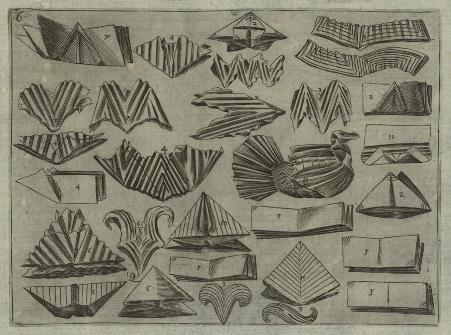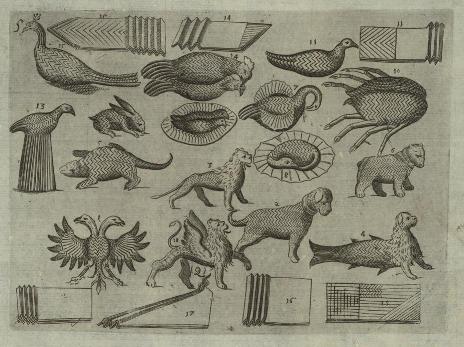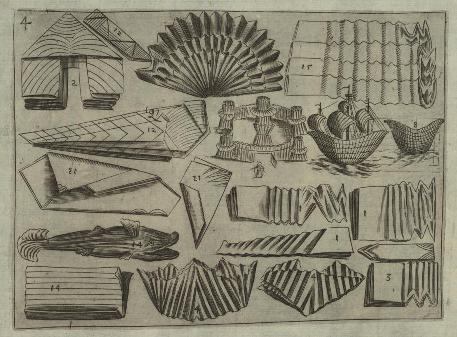| The Public Paperfolding History Project
Last updated 19/8/2024 x |
|||||||
| Trattato delle piegature by Mattia Giegher | |||||||
| The
'Trattato delle piegature', first published in 1629 is
one part of a larger work known as 'Li tre trattati', the
other two parts of which had been published earlier. Its
author was Matthias Jäger, who was German, but who
published the work under his Italianised name of Mattia
Giegher.
This work is mentioned in Gershon Legman's 'Bibliography of Paperfolding' which was published in 1952.
A full copy of the work is available online here. ********** This book is the first known work to describe techniques for folding starched napkins into table decorations. It was 'considerably expanded and translated into German by Georg Philipp Harsdörffer in 1657, becoming the primary source for many eighteenth- and nineteenth-century treatises on napkin folding.' (https://www.thinking3d.ac.uk/Giegher1629/). The same source states that 'the practice of napkin folding first developed at the Renaissance courts in the North-East of Italy, where it made possible to craft marvellous centrepieces known as trionfi da tavola (‘table triumphs’), often embellished with decorative elements made of glass, ceramics or even sugar. Besides having a decorative function, such complex centrepieces also fulfilled a subtler purpose: in fact, during the banquet guests were expected to identify and comment upon the hidden symbolic meaning of the figure reproduced by the folded centrepiece, which was thus understood as a conversational piece in its own right, just as the elegantly-decorated maiolica dishes so ubiquitous on Renaissance tables'. The three illustrations below are taken from this book and show the high standard of designs that could be achieved at this time.
********** |
|||||||




